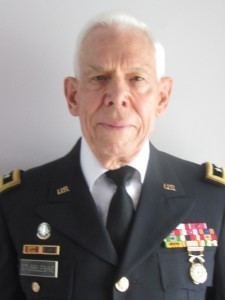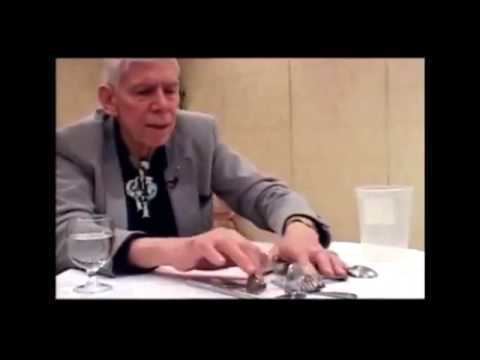Nickname(s) Bert Battles/wars Invasion of Grenada | Name Albert Stubblebine | |
 | ||
Battles and wars Invasion of Grenada Allegiance United States of America Years of service 1952-1984 (32 years) | ||
Albert "Bert" Newton Stubblebine III (February 6, 1930 – February 6, 2017) was a United States Army major general whose active duty career spanned 32 years. Beginning as an armor officer, he later transferred to intelligence. He is credited with redesigning the U.S. Army intelligence architecture during his time as commanding general of the U.S. Army Intelligence and Security Command (INSCOM) from 1981 to 1984, after which he retired from active service.
Contents

After retirement it became widely known that Stubblebine during his active service had an interest in psychic warfare which had hopes to develop an army of soldiers with special powers, such as the ability to walk through walls.
Biography

Stubblebine graduated from the United States Military Academy (Class of '52) and subsequently received a masters degree in chemical engineering from Columbia University. He married his wife, Geraldine, in 1952; they would ultimately adopt two children. Beginning his military career as an armor officer, he later transferred to military intelligence.

In 1968, Stubblebine was transferred to the staff of the Military Assistance Command, Vietnam and later was assigned to the 25th Infantry Division as its G-2 (Intelligence officer). For his service in Vietnam War, Stubblebine was awarded with Legion of Merit and Bronze Star Medal.

As a Colonel, Stubblebine participated in a special task force which defined the requirements of the U.S. Army for future conflict. By 1980, General Stubblebine commanded the Electronic Research and Development Command (ERADCOM). Stubblebine was strongly influenced by Lt. Col. Jim Channon's New Age document First Earth Battalion Field Manual (1979). Stubblebine became a proponent of psychic warfare and initiated a project within the U.S. Army Intelligence and Security Command (INSCOM), which he commanded from 1981 to 1984, to create "a breed of 'super soldier'" who would "have the ability to become invisible at will and to walk through walls". He attempted to walk through walls himself — but failed, as he himself described in a 2004 interview. (These activities feature prominently in Jon Ronson's 2004 book The Men Who Stare at Goats.)
A key sponsor of the Stargate Project (a remote viewing project) at Fort Meade, Maryland, Stubblebine was convinced of the reality of a wide variety of psychic phenomena. He required that all of his battalion commanders learn how to bend spoons in the manner of celebrity psychic Uri Geller, and he himself attempted several psychic feats, in addition to walking through walls, such as levitation and dispersing distant clouds with his mind. Stubblebine was a key leader in the U.S. military invasion of Grenada (1983) and was, according to a report published by the Daily Mail, "at the heart of America's military machine" at that time. After some controversy involving the experiments with psychic phenomena, including alleged security violations from uncleared civilian psychics working in Sensitive Compartmented Information Facilities (SCIFs), Stubblebine took "early retirement" from the Army in 1984. (This occurred after an incident at which Stubblebine offended Gen. John Adams Wickham, Jr. — then U.S. Army Chief of Staff — by offering to perform a spoon-bending feat at a formal gala. Wickham viewed such phenomena as associated with Satanism.)
Stubblebine's successor as the INSCOM commander was Major General Harry Soyster, who had a reputation as a much more conservative and conventional intelligence officer. Soyster was not amenable to continuing paranormal experiments and the Army's participation in the Stargate Project ended during his tenure, though not until 1995.
After Stubblebine retired from the Army he worked as a vice-president for BDM Corporation. He retired from that job in 1990. The same year, he was inducted into the Military Intelligence Hall of Fame. In 1994 his wife Geraldine was granted a divorce on grounds of adultery. Since then he has married Rima E. Laibow, psychiatrist and nutrition campaigner. He also acted as a part-time consultant to two government contractors, ERIM and Space Applications Corporation.
911
Stubblebine's statements questioning the plausibility of the damage done to The Pentagon by the hijacked aircraft during the September 11 attacks have been cited by David Ray Griffin to suggest that there was a conspiracy involving some elements of the U.S. government.
Decorations
Here is Major General Stubblebine´s ribbon bar:
